Roller skating is a fun way for kids to stay active while building balance, coordination, and confidence. But finding the right skates is key to keeping it safe and enjoyable. Here’s the deal:
- Safety first: Look for skates with a snug fit, adjustable sizing, and proper ankle support. Protective gear like helmets, knee pads, and wrist guards is a must.
- Types of skates: Beginners might prefer quad skates for stability, while inline skates are better for speed and agility. Adjustable skates are great for growing feet, and Snowfeet Mini Ski Skates offer a cool twist for winter fun.
- Top picks: Options like the Rollerblade Microblade (inline, $100+), Riedell Kids Skates (quad, $175), and Snowfeet Mini Ski Skates ($250) balance safety, comfort, and performance.
Want to keep it simple? Match the skates to your child’s skill level and make sure they fit well. Add the right gear, and you’re all set for a safe, fun skating adventure in 2025!
The Ultimate Guide to Buying Kid Skates: Best Picks & What to Avoid!
Key Safety Features for Kids' Roller Skates
When it comes to kids and roller skating, safety is a top priority. The right features can make all the difference between a fun day of skating and a trip to the doctor. Knowing what to look for ensures your child stays safe while enjoying their time on wheels.
Proper Fit and Adjustable Sizing
A good fit is everything. The skate should fit snugly, leaving about a thumb's width of space at the toe. Skates that are too big or too small can lead to falls and discomfort. Since kids grow quickly, adjustable skates that expand by 3–4 sizes are a smart choice.
Consider skates with micro-adjustable closures, like BOA systems, which are a step up from traditional laces. These closures evenly distribute pressure across the foot and allow for precise adjustments. The heel should stay locked in place when your child flexes their ankle forward - if the heel lifts, the skate isn’t the right size or fit.
Width matters, too. Kids with narrow feet will benefit from skates with adjustable straps and strong heel locks, while kids with wider feet need skates with roomier toe boxes and flexible uppers to avoid pinching or pressure points.
Protective Gear for Safe Skating
Once you’ve nailed the fit, the next step is protective gear. Even experienced skaters take spills, and the right gear can turn a potentially serious injury into nothing more than a minor scrape.
- Helmets: Non-negotiable. Look for helmets certified by the CPSC (Consumer Product Safety Commission). While bike helmets can work, skating helmets often provide better coverage at the back of the head. Make sure the helmet sits level on your child’s head, with a snug chin strap that only allows one finger underneath.
- Knee Pads: These take the brunt of most falls. Look for knee pads with hard plastic caps and firm foam padding that cover the entire kneecap. Avoid thin, stretchy options - they won’t hold up during a hard fall.
- Wrist Guards: A must for beginners. Kids instinctively put their hands out to break a fall, so wrist guards with plastic splints can help prevent sprains and fractures. They should fit snugly but not restrict hand movement.
- Elbow Pads: While not always a must-have, they’re a good idea for kids trying tricks or skating aggressively. Like knee pads, they should have hard caps and secure straps.
The trick is finding gear that fits well and feels comfortable. If it’s too bulky or restrictive, your child might ditch it after the first few sessions.
Brake Systems and Ankle Support
Beyond fit and protective gear, solid brake systems and good ankle support are key to keeping young skaters safe.
Brakes make a big difference. Traditional roller skates use toe stops - rubber or plastic stoppers at the front of the skate. These are great for beginners but require proper instruction to use safely. Inline skates, on the other hand, often feature heel brakes, which are generally easier for kids to learn. Some advanced models even include Active Brake Technology (ABT), which activates the brake when the skater lifts their toe, making stopping more intuitive.
Ankle support is equally important. Look for skates with high-top designs that extend above the ankle bone to prevent rolling injuries. The boot should provide stability without restricting movement. High-quality skates often feature reinforced ankle areas with extra padding and support structures. Some models also include 45-degree straps, which wrap around the ankle at an angle for added lateral support.
Closure systems also play a big role in ankle support. A combination of laces, straps, and buckles allows for a customized fit that’s both secure and comfortable. For younger skaters, softer boots with plenty of padding can help avoid pressure points while still offering support. As kids gain confidence and improve their technique, they can transition to firmer boots that provide greater control.
Best Roller Skate Models for Kids (2025)
Picking the perfect roller skates for your child doesn’t have to feel like a daunting task. In 2025, there are plenty of fantastic options to suit different budgets, skill levels, and styles. Here’s a rundown of some of the best models that combine safety, comfort, and fun - plus a few exciting innovations that are changing the way kids enjoy skating.
Snowfeet* Mini Ski Skates (38 CM)
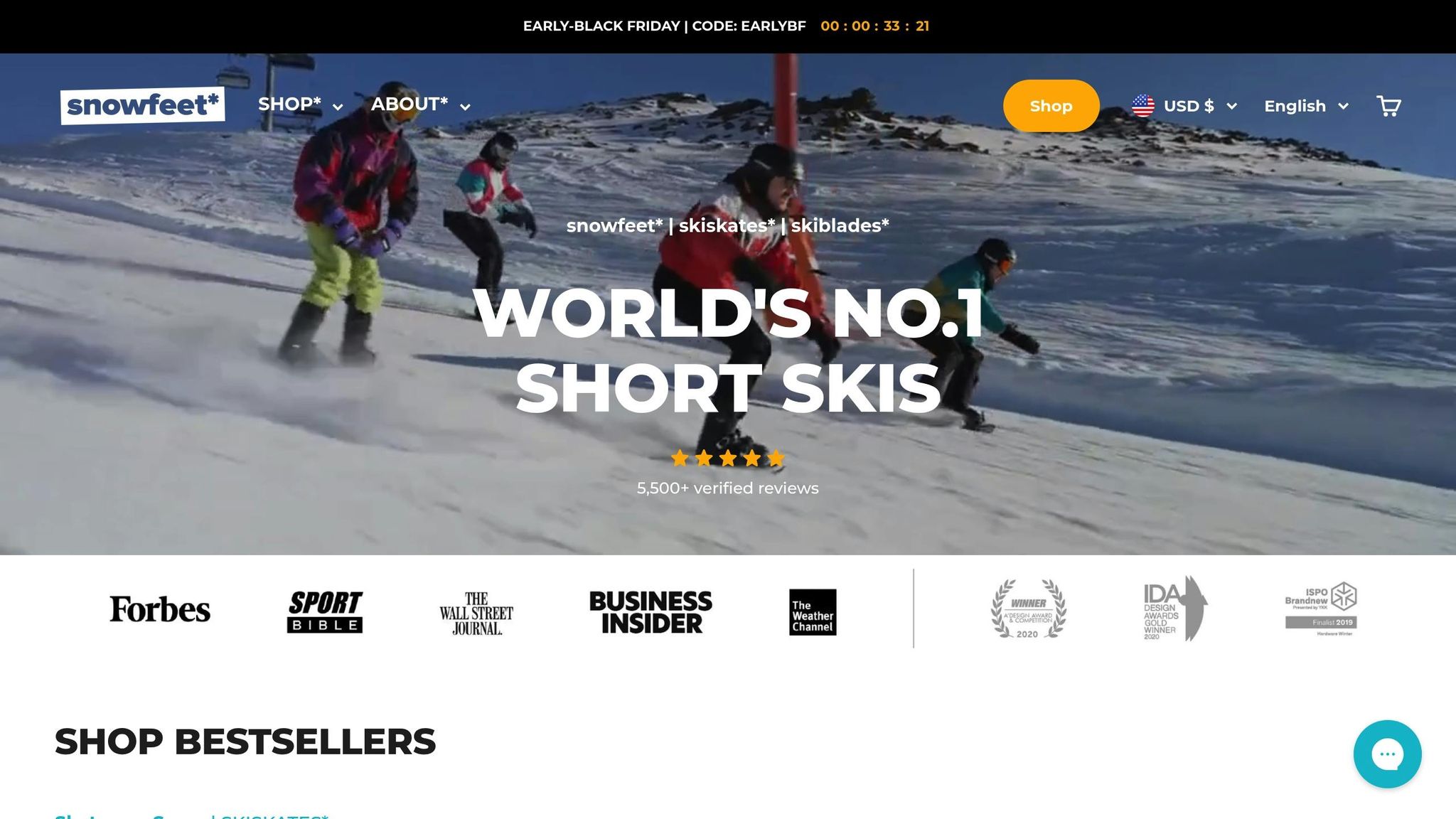
Snowfeet* Mini Ski Skates take winter fun to a whole new level. These compact skates, measuring just 38 CM, attach directly to regular winter boots, making them a lightweight and portable alternative to traditional skis or snowboards. Perfect for sledding hills, snowy backyards, or even hiking trails, they’re designed to be easy to use - kids as young as 5 can pick them up quickly.
The metal ski edges offer dependable stopping power, while the built-in heel brake provides an intuitive way to slow down. Compatible with most winter boots (US sizes 10 kids to 6 adult), these skates eliminate the need for extra gear. At $250, they’re a fun and hassle-free option for families looking to enjoy winter without the cost and complexity of traditional ski equipment.
Snowfeet PRO (50 CM)
For kids ready to step up their snow skating game, the Snowfeet PRO is a fantastic choice. With an extended length of 50 CM, these skates offer improved balance and stability, making them ideal for more advanced skaters. Adjustable bindings ensure they can grow with your child and fit various boot types. The raised platform and enhanced base design make turning and carving smoother, while the fiberglass-reinforced construction stands up to tough use. Plus, kids can pick from several color options to match their personal style.
Priced at $275, the PRO model strikes a balance between beginner-friendly features and performance upgrades. Snowfeet* continues to set the standard for blending safety and cutting-edge design before diving into more traditional skating options.
Classic Roller Skates (e.g., Riedell Kids Skates)
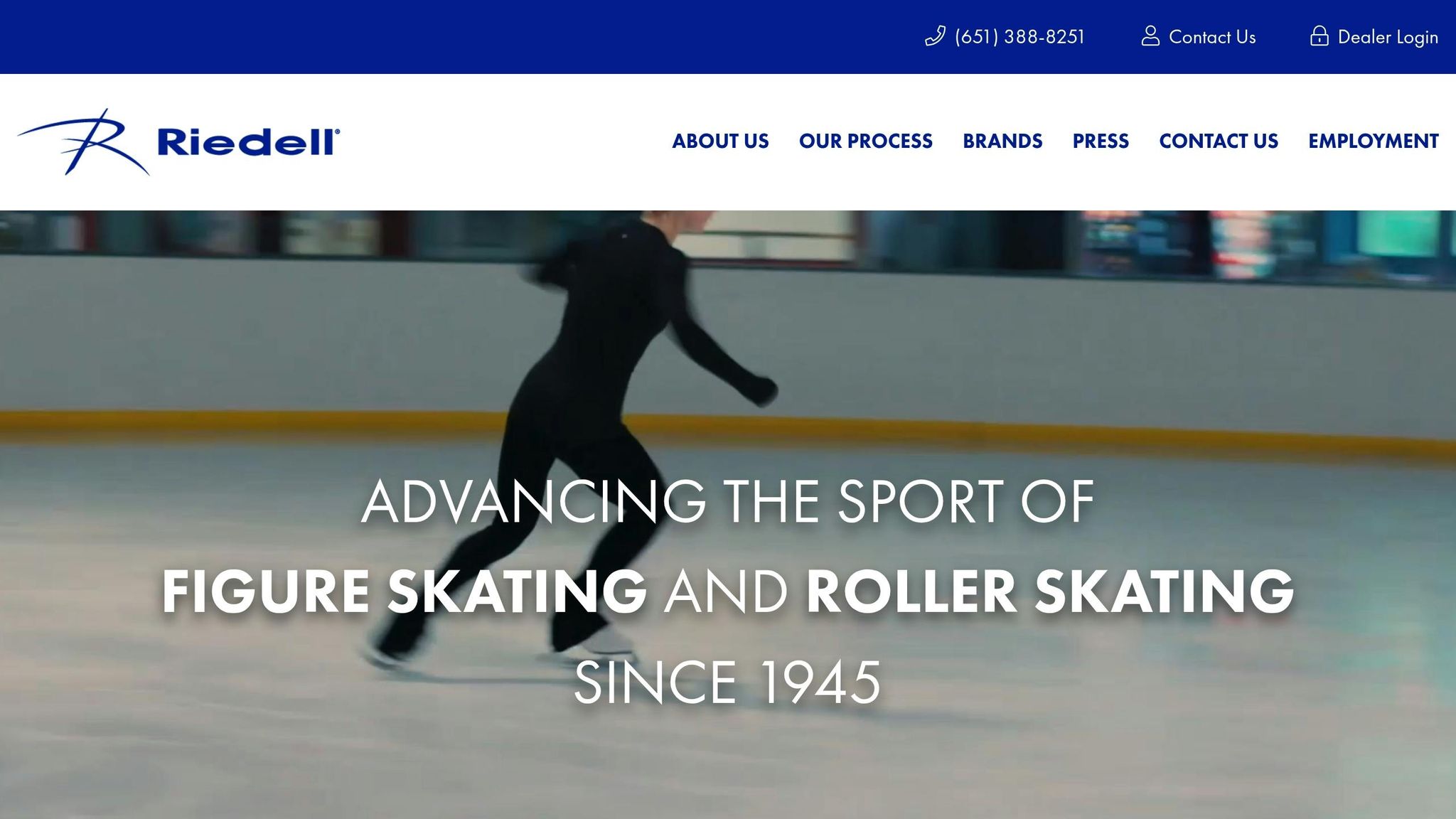
For those who love the timeless look and feel of quad skates, classic designs like Riedell’s kids’ models are a reliable pick. A standout option is the R3 Derby Roller Skate Set, which comes in at $175. These skates feature a high-top boot for excellent ankle support and a four-wheel setup that offers more stability than inline skates. The toe-stop brake makes it easy for kids to control their speed, and the wider wheelbase helps beginners stay balanced during those first wobbly sessions.
Riedell is known for its durable construction, so these skates are built to last through growth spurts and skill development. With a padded liner and breathable materials, they’re as comfortable as they are sturdy - a solid choice for families who want a dependable pair of skates.
Inline Skates (e.g., Rollerblade Microblade)

As kids gain confidence and skills, many transition from quad skates to inline skates for better speed and agility. The Rollerblade Microblade series is a top pick for growing children. These skates are adjustable, expanding up to four full sizes to accommodate growing feet. The inline wheel design delivers faster speeds and smoother rides on a variety of surfaces, while micro-adjustable closures ensure a snug, secure fit. The ABEC-7 bearings provide a smooth, quiet glide.
For braking, the heel brake system is easier for many kids to master compared to a toe-stop. Softer wheels (78A–85A durometer) make these skates perfect for outdoor use, handling small debris with ease. Inline skates are an excellent next step for kids ready to graduate from the stability of quad skates.
Adjustable Skates (e.g., SkatePro Adjustable Skates)
If you’re dealing with fast-growing feet, adjustable skates are a lifesaver. Models like the Circle Society Classic Adjustable Skates ($43) or the Chicago Kids' Adjustable Quad Roller Skates ($69) offer three to four sizes of adjustability in one purchase. These skates are great for beginners or families on a budget, providing a cost-effective way to keep up with growth spurts.
Many adjustable skates include features like reinforced ankle support and high-quality urethane wheels for a smooth ride. Some even come with light-up wheels, adding an extra layer of fun. While they might not match the performance of skates with fixed sizing, they’re a practical and playful option for young beginners.
When choosing skates, it’s important to match the type of skate with your child’s skill level and how they plan to use them. Beginners often benefit from the stability of quad skates, while more experienced skaters might enjoy the speed and agility of inline models. And if you’re looking for something different, Snowfeet* products bring a fresh twist to winter skating fun.
sbb-itb-17ade95
Comparison: Snowfeet* Mini Ski Skates vs. Ski & Snowboard Brands
While this guide mainly focuses on roller skates for kids, it’s worth taking a look at Snowfeet* Mini Ski Skates - a fresh take on winter fun. Families traditionally lean toward skiing or snowboarding for their snowy adventures, but Snowfeet* Mini Ski Skates offer a compact and convenient alternative. They challenge the idea that you need long, bulky gear to enjoy winter sports. Let’s break down the key differences between Snowfeet* Mini Ski Skates and traditional ski or snowboard equipment.
Comparison Table of Key Features
| Feature | Snowfeet* Mini Ski Skates | Traditional Ski Gear | Snowboard Gear |
|---|---|---|---|
| Length | 38 CM (approx. 15 in) – compact | Longer, designed for extended use | Much longer, built for stability |
| Weight | Ultra-light and backpack-friendly | Heavier and bulkier | Requires specialized transport |
| Compatible Boots | Works with regular winter boots | Requires dedicated ski boots | Needs specialized snowboard boots |
| Learning Curve | Easy to pick up; kids learn quickly | More complex, often needs professional lessons | Varies; lessons are usually recommended |
| Terrain Versatility | Great for slopes, parks, hiking trails, and backyards | Best for groomed resort slopes | Primarily for designated snowboard areas |
| Installation | Quick and simple setup | Time-intensive with bindings and adjustments | Takes longer due to mounting needs |
| Total Cost | Around $250 for everything | Significantly higher when factoring in all gear | Typically more expensive overall |
| Portability | Fits in a small backpack | Requires special transport equipment | Needs a dedicated gear bag |
This table highlights how Snowfeet* stands out, especially for families looking for a simpler, more affordable option.
Why Families Love Snowfeet*
- Affordable Winter Fun: Traditional skiing or snowboarding often comes with hefty price tags for gear. Snowfeet* Mini Ski Skates, on the other hand, cost about $250 and work with the winter boots you already own. That’s a win for your wallet.
- No Resort Required: Forget pricey resort trips. Snowfeet* fits in a standard backpack, so you can enjoy the snow at your local park, neighborhood hill, or even your backyard.
- Quick to Learn: The compact design makes these skates easy to control, helping kids (and adults) build confidence and skills faster than they might with traditional gear.
- Go Anywhere: Unlike traditional skis or snowboards, which are mainly designed for resorts, Snowfeet* Mini Ski Skates handle a variety of terrains. Whether it’s a slope, a park, or a hiking trail, they’ve got you covered.
Snowfeet* flips the script on winter sports. While traditional gear emphasizes length and bulk for performance, Snowfeet* shows that shorter, lighter equipment can make winter fun more accessible and less intimidating. For families, this means an easy, budget-friendly way to turn snowy days into memorable adventures.
Tips for Safe and Fun Skating
Getting your child into roller skating takes more than just buying a pair of skates. It’s about preparation, upkeep, and finding the right spots to skate. These steps will help ensure your child has a safe and enjoyable experience while building on the safety tips we’ve already covered.
Checking Fit and Maintenance
Making sure the skates fit properly is a big deal. Kids grow fast - sometimes half a size in just three or four months - so it’s important to check the fit regularly. If you notice red marks, blisters, or hear complaints about discomfort, it’s probably time to size up.
Skate maintenance is just as important as the fit. Inspect the wheels weekly for cracks or debris, and make sure they spin smoothly. Bearings should be cleaned about once a month. Before every skating session, tighten all bolts and screws to prevent wobbling or instability. Loose hardware can lead to falls. Don’t forget to check the toe stop on quad skates or the brake pads on inline skates - they wear out over time and need replacing when they get too short or smooth to stop effectively.
Once the skates are in good shape, it’s time to focus on teaching basic skills.
Teaching Basic Skating Skills
Start with balance. Have your child stand in their skates on a soft surface to get used to the feel. When they’re ready, move to a smooth surface and teach them to march in place, lifting one foot slightly at a time.
The “ready position” is a game-changer for beginners. Show them how to bend their knees slightly, hold their arms out for balance, and keep their eyes looking ahead - not down at their feet. This stance helps them stay stable and recover from wobbles more easily.
Teach them how to fall safely. Falling forward onto knee pads is much better than falling backward. Practice this on soft grass first. If they feel themselves losing balance, encourage them to drop to their knees and slide instead of trying to fight the fall.
Stopping is another key skill. For inline skates, start with the "T-stop" method, where one foot drags behind the other at a right angle. For quad skates, teach them to use the toe stop by lifting their toes and pressing the stopper against the ground. Practice these techniques at slow speeds before moving faster.
Once they’ve got the basics down, it’s time to find a safe place to practice.
Choosing Safe Skating Locations
Look for smooth, clean surfaces like empty parking lots or quiet park paths. Avoid areas with cracks, heavy foot traffic, or anything that might trip up a small skater. While skate parks can be fun, they’re better suited for kids who are more experienced.
Stay clear of traffic and busy sidewalks. Sidewalks often have uneven surfaces, pedestrians, and driveways where drivers might not see a small skater. Stick to areas where your child can skate without distractions or hazards.
Weather matters, too. Choose dry surfaces and avoid skating on wet, icy, or overly hot pavement since these conditions can affect traction.
Indoor skating rinks are a great option. They provide smooth floors, good lighting, and staff who know skating safety. Many rinks even offer beginner sessions with slower music and fewer skaters. While rental skates are usually well-maintained, bringing your own ensures a better fit and more familiarity.
Don’t forget to check local rules. Some cities require helmets for younger skaters, and parks often have specific guidelines about where skating is allowed. If outdoor conditions aren’t ideal, check out local community centers. Many have gymnasiums available for rent, offering a safe indoor space to practice.
Conclusion: Choosing the Best Roller Skates for Your Child in 2025
To wrap things up - when picking roller skates for your child, focus on the essentials: a proper fit, solid safety features, and the right match for their skill level. Whether you go for adjustable inline skates for a beginner or classic quad skates for a more experienced skater, don’t overlook the importance of quality bearings and a dependable brake system.
On a related note, Snowfeet* brings a fresh twist to outdoor fun by blending skating with winter sports. Their Snowfeet* Mini Ski Skates, starting at $250, and the Snowfeet* PRO, priced at $275, offer a compact, exciting way to glide through the snow - just strap them on with your regular winter shoes and you’re good to go.
Investing in quality skates does more than just keep your child active - it helps them build balance, coordination, and confidence that can carry over into other activities. Whether they stick with traditional roller skating or branch out into something new like Snowfeet*, you’re setting them up for a lifetime of movement and outdoor enjoyment.
If possible, try out skates in person to find the perfect pair. With the right preparation and gear, 2025 could be the year your child falls in love with skating. Pick skates that combine safety, fun, and a touch of adventure!
FAQs
What’s the difference between quad skates and inline skates for kids, and how do I choose the right type?
Quad skates, with their classic side-by-side wheel setup, are often the go-to choice for younger or beginner skaters. Why? They’re more stable and easier to balance on, making them perfect for kids who are just starting out or need a little extra support while they’re learning the ropes.
Inline skates, however, have wheels arranged in a single straight line. This design is built for speed and agility, allowing for sharper turns and quicker movement. They’re a better fit for kids who already have some skating experience or are ready to tackle a more advanced challenge.
When choosing between the two, think about your child’s age, skill level, and confidence on wheels. Quad skates are a fun, stable option for beginners, while inline skates offer a faster, sportier ride for more experienced skaters.
How do Snowfeet Mini Ski Skates compare to traditional skiing or snowboarding gear in terms of ease of use and cost?
Snowfeet Mini Ski Skates are a game-changer for anyone looking to hit the slopes without breaking the bank - or their back lugging heavy gear. Unlike traditional skis that demand specialized boots and bulky equipment, Snowfeet are compact, lightweight, and work with most winter boots. This means you can skip the hassle and get straight to the fun.
When it comes to cost, Snowfeet are a much more wallet-friendly option. Priced between $140 and $650, they’re far more affordable than a full ski or snowboard setup, which often includes skis, boots, bindings, and other gear - and can easily cost a small fortune. With their ease of use and lower price, Snowfeet make winter sports more accessible for beginners and seasoned adventurers alike.
What protective gear does my child need to stay safe while roller skating?
To keep your child safe while roller skating, make sure they’re equipped with the right protective gear. At a minimum, this includes a properly fitting helmet, knee pads, elbow pads, and wrist guards. These essentials go a long way in reducing the risk of injuries from falls or bumps.
When picking a helmet, look for one that’s certified for skating or cycling - these offer the right level of impact protection. Pads should fit snugly but still allow for easy movement, staying secure without being uncomfortable. Wrist guards are a must-have, as hands are usually the first thing to hit the ground during a tumble.
Investing in well-made gear not only keeps your child safer but also gives them the confidence to enjoy skating without constant worry. After all, skating should be about fun, not fear!





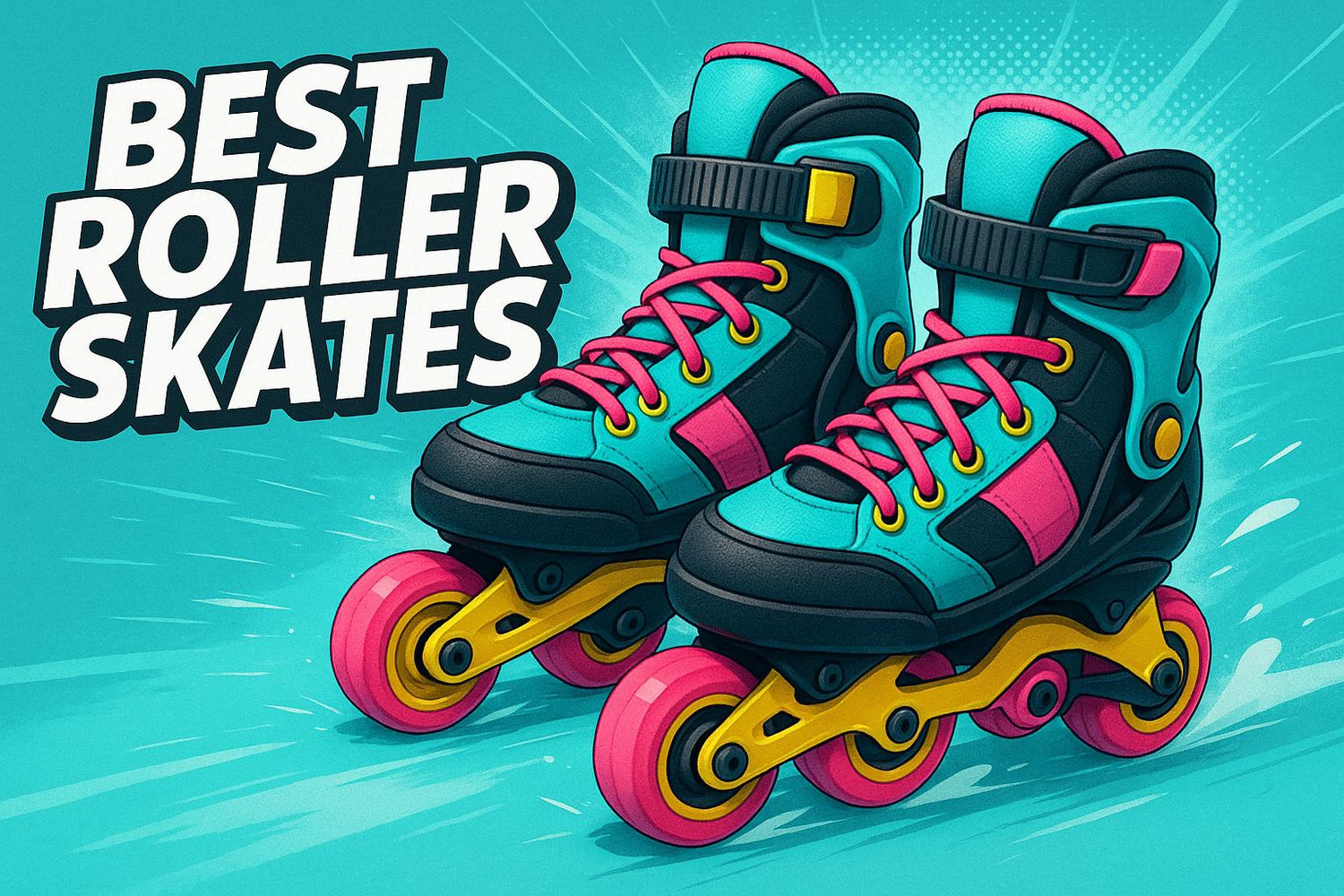
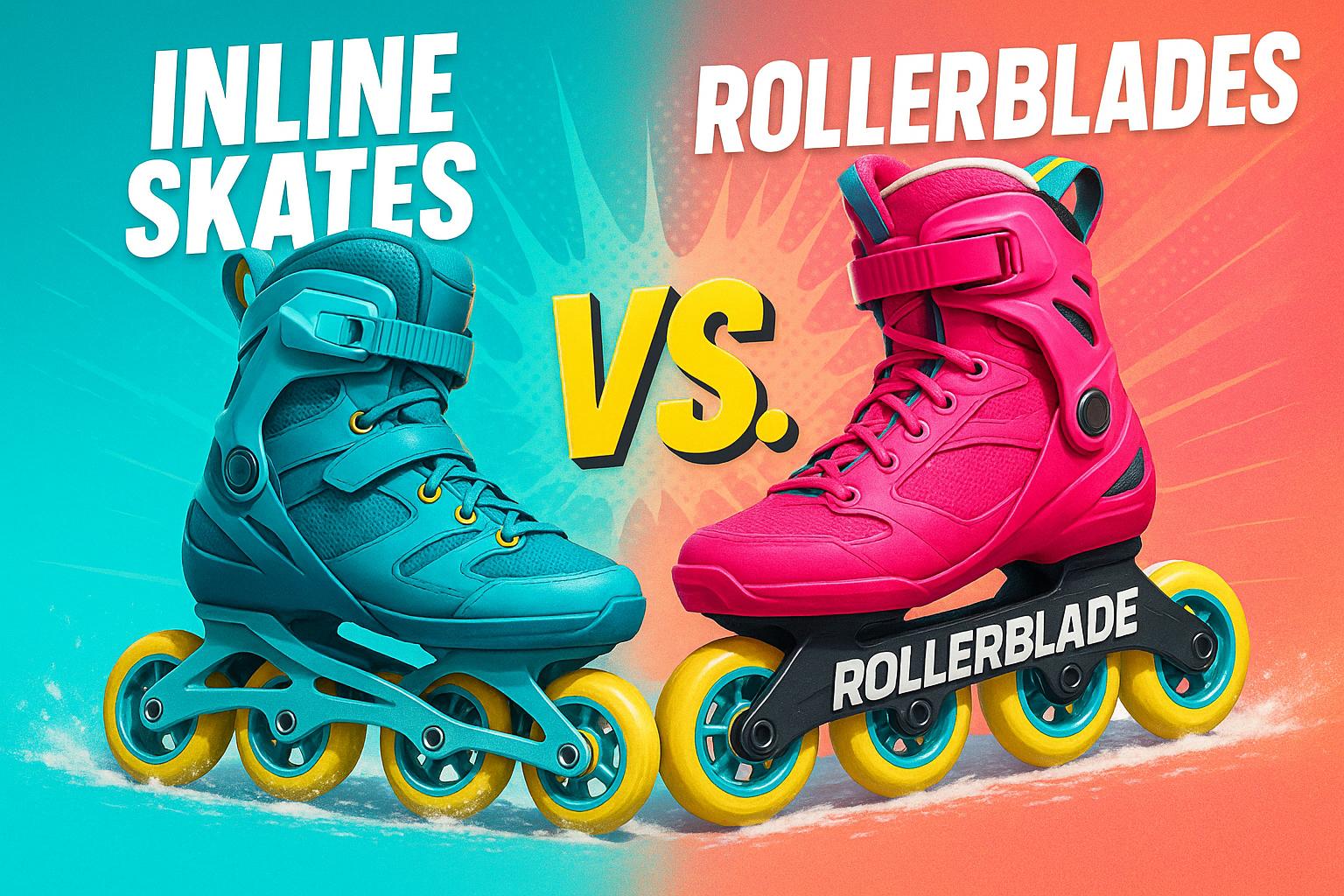
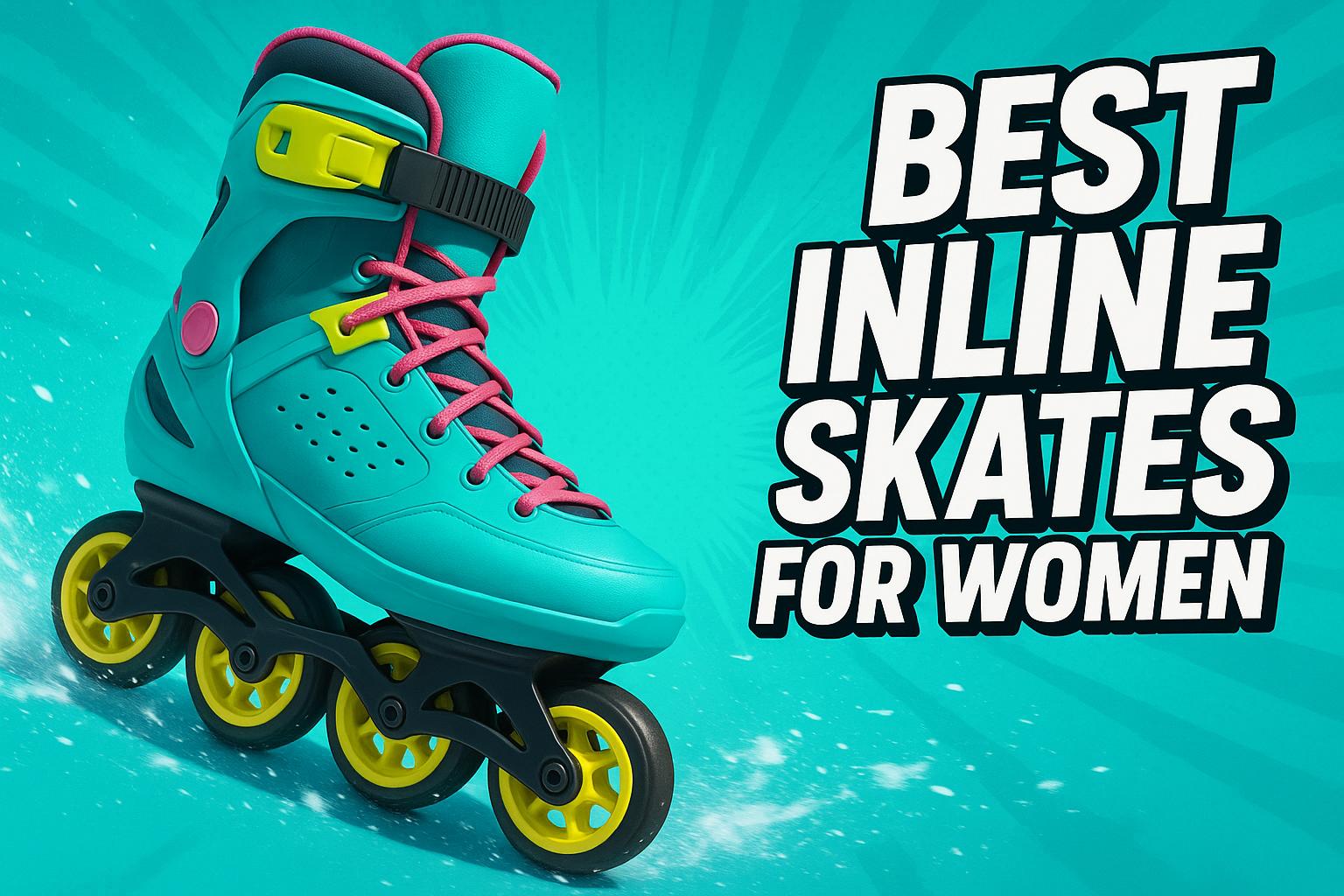




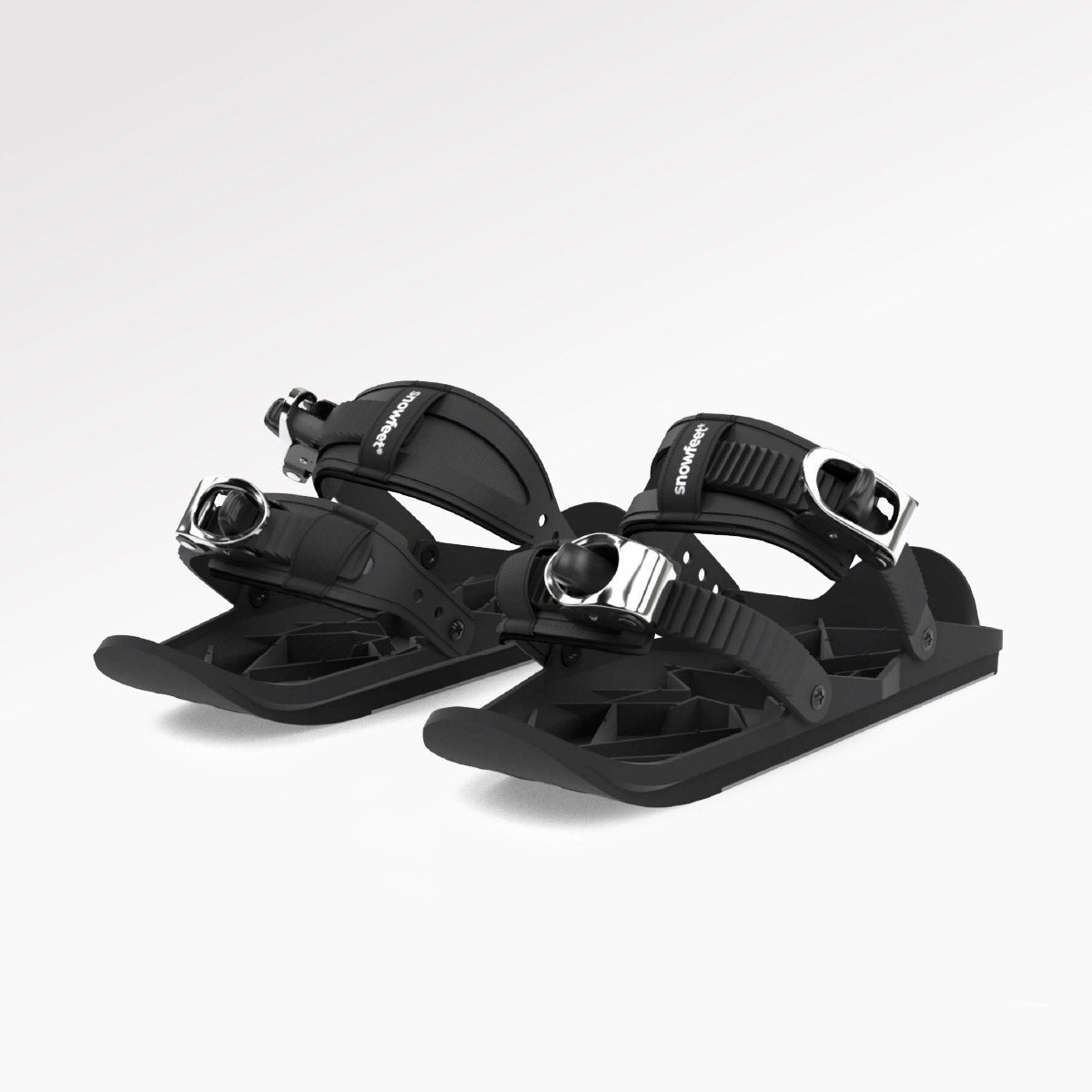
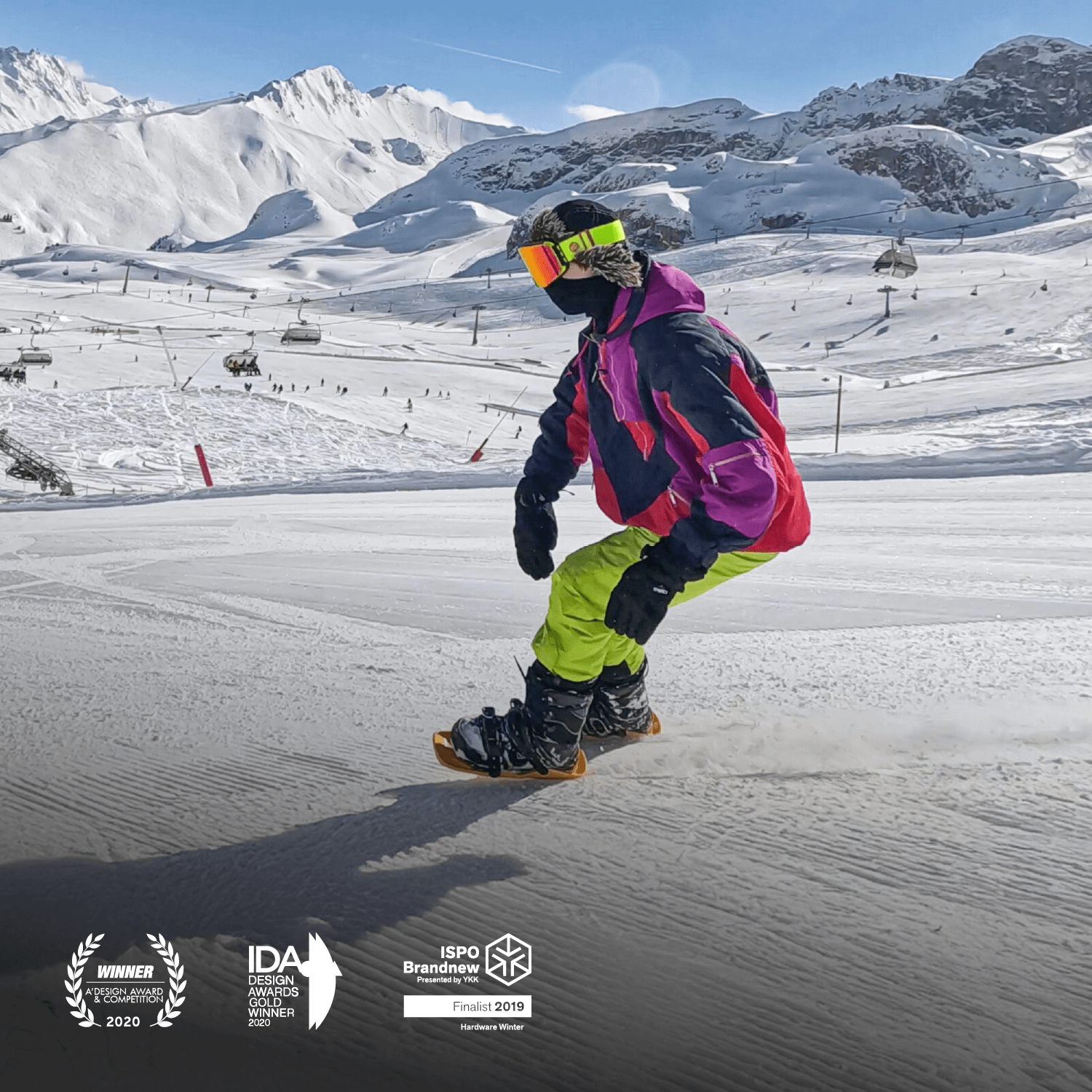
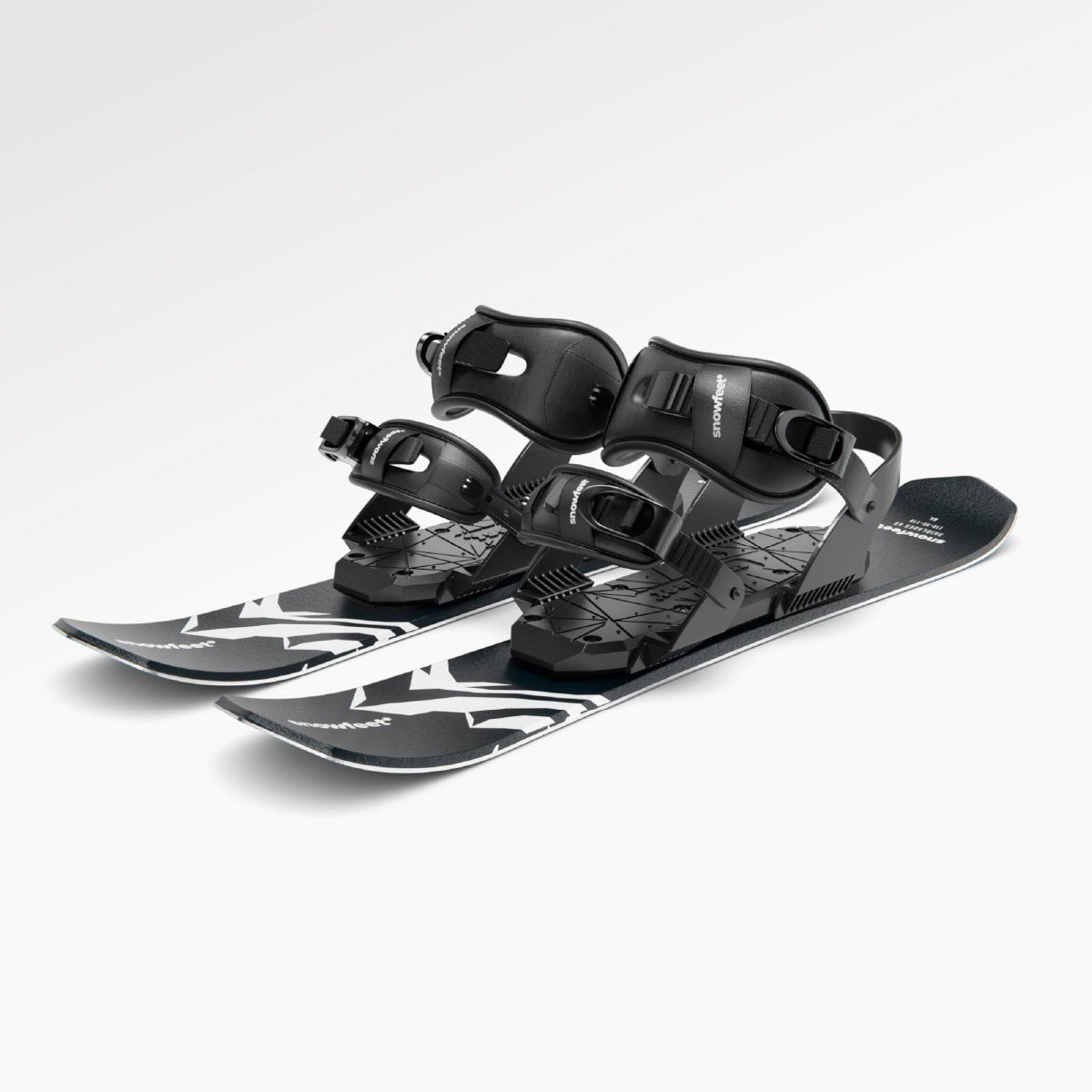

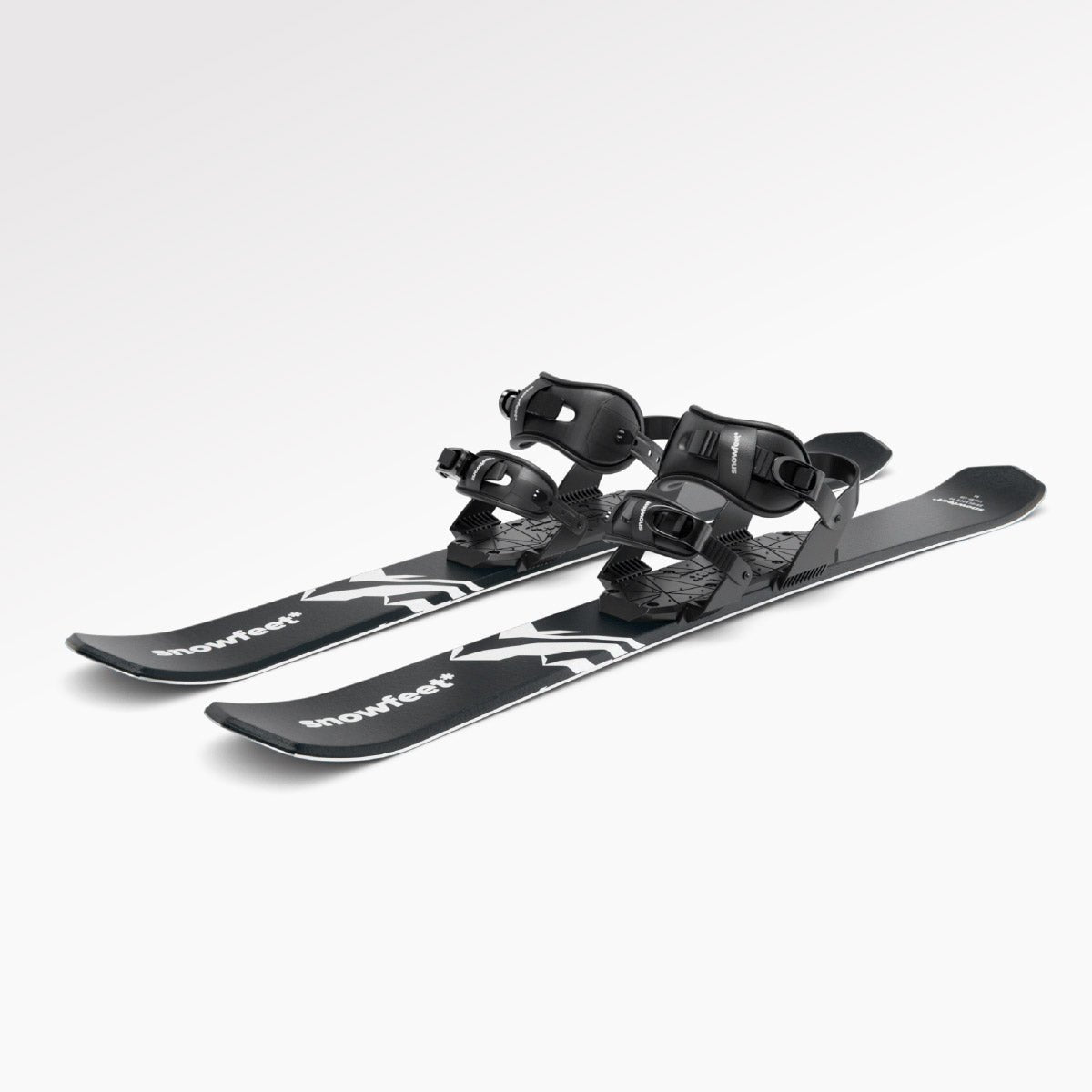

Zanechte komentář
Tento web je chráněn službou hCaptcha a vztahují se na něj Zásady ochrany osobních údajů a Podmínky služby společnosti hCaptcha.